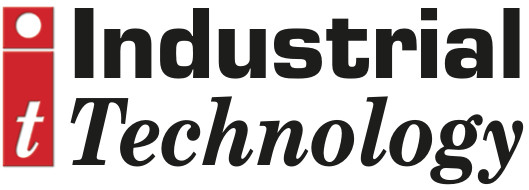
Posted to News on 23rd Oct 2024, 14:00
Free yourself from manual CAD drawings
Traditional CAD software has its time and place. But when it comes to the creation of electrical schematics, which can be hundreds of pages long and must be accurate, standardised and quick to produce, it simply cannot hold its own, as the experts at EPLAN explain.

(See EPLAN at Machine Building North, 10 April 2025, on stand 96)
As technologies continue to evolve rapidly it has become evident that earlier CAD programs were only created to solve the purpose of draftsmen or mechanical engineers. As a result, many companies who are involved with electrical design are now turning to alternatives for a more suitable and enhanced platform that will support their goals and objectives.
If you've never used a dedicated ECAD (electrical computer aided design) solution, such as EPLAN, you may well be convinced that your current software is all that you need. And that's true if you don't mind missing out on a whole range of benefits that can hugely improve productivity and profitability.
It's no secret that despite the huge benefits that accompany a new electrical design system, companies perceive that the transition process is lengthy and confusing. EPLAN aims to make users' journey to intelligent, smart designs as simple and quick as possible.
Why are electrical design engineers moving away from manual CAD software? There are a number of factors in play.
1. Budget reductions: To improve project profitability, the team must work as efficiently as possible. This means eliminating errors which may cause costly last-minute changes.
2. Need for new talent: Attracting new talent requires companies to adopt the latest technologies and best working practices. Using an advanced platform such as EPLAN also allows lesser skilled workers to learn faster, as they spend less time performing repetitive manual tasks. This also helps to address the skills gap.
3. CAD capability no longer fits with corporate goals: It's critical that design software continues to evolve to support new technologies, so that engineers can keep up with demand and wider trends in industry. This ensures that the company remains competitive and aligned to customer requirements.
4. Pressure for shorter design cycles: Designs need to be correct the first time to ensure that projects are delivered on time and that customers remain happy.
5. Inefficient workflows: As products and designs continue to become more complex, tedious and ineffective workflows will only become more apparent. This refers to the workflows of an individual designer, workflows within the engineering team, and/or other departments within the business.
6. Pressure from project stakeholders: Business ecosystems now have more influence than ever before. It's crucial, then, that all project stakeholders are able to bring all engineering data together in one project which is easily accessible.
The right tools for the job - why invest in EPLAN?
Using a fully digital electrical design/ECAD platform, such as EPLAN, has several advantages that help streamline every stage of the design process, while improving two-way communication with procurement, production and assembly teams.
The full platform integrates all elements of electrical design into one comprehensive software package with the same graphical user interface and collaborative cloud user dashboard. The full platform includes:
- The ability to create and edit drawings and documents
- A centralised database of part numbers, and standardised routines and workflows
- Advanced 3D electrical design software
- Up-to-date parts catalogue for purchasing, with information available on alternative options if parts are unavailable.
- A shared interface for assembly instructions
EPLAN reduces mistakes in the electrical design process itself by automatically flagging discrepancies or issues as they arise throughout the project - before they can become damaging production problems. Version control capabilities also enable real-time tracking of changes to your drawings and documents as the project progresses, further helping to keep all stakeholders on the same page and reduce errors.
Investing in a digital electrical design platform improves efficiency and reduces project costs throughout development, while also eliminating the avoidable but all too common production issues that arise from poor communication, data entry mistakes, and human error. The continuous flow of data and enforced change process from engineering to production further increases both product quality and speed of production, as all data is from a single source of truth, therefore accurate and up-to-date.
Smarter design
Modern ECAD software enables tedious, time-consuming engineering design functions to be performed automatically and instantaneously. With such capability, users can benefit from increased productivity, shorter project turnaround times and improvements in product quality. The latest ECAD software solutions provide design automation, automatic report generation and data integration tools that can reduce engineering times by 50% when compared with traditional, manually intensive CAD-based drafting packages.
Support for 3D design is also a feature of the latest ECAD software and it makes design much simpler and more accurate. Engineers can readily see whether they have chosen the optimum layouts for components and cable runs, which eliminates the need for shop-floor changes and saves a lot of time during panel manufacture. The generation of 'digital twins' allows panels to be virtually viewed - and even virtually demonstrated to the end user - before the design even reaches the shop floor.
ECAD software should also make it easy to account for thermal considerations when designing switchgear. For example, it may provide the functionalities needed to calculate the total power dissipation of the switchgear, which is made up of the power dissipation of the devices plus the power dissipation of the busbar systems. With EPLAN's ECAD solution, the results of this calculation can be transferred to Rittal RiTherm software package (Rittal is a sister company to EPLAN), which allows optimal air-conditioning and thermal management solutions to be readily identified.
Choosing the best components to use in a control panel is always a headache for design engineers, especially in today's world where new and improved devices appear almost daily. Containing data on millions of components from hundreds of manufacturers (and with new updates occurring regularly), the EPLAN Data Portal is free to use and, as the data it contains is provided by the manufacturers themselves, it's accurate, complete and up to date.








